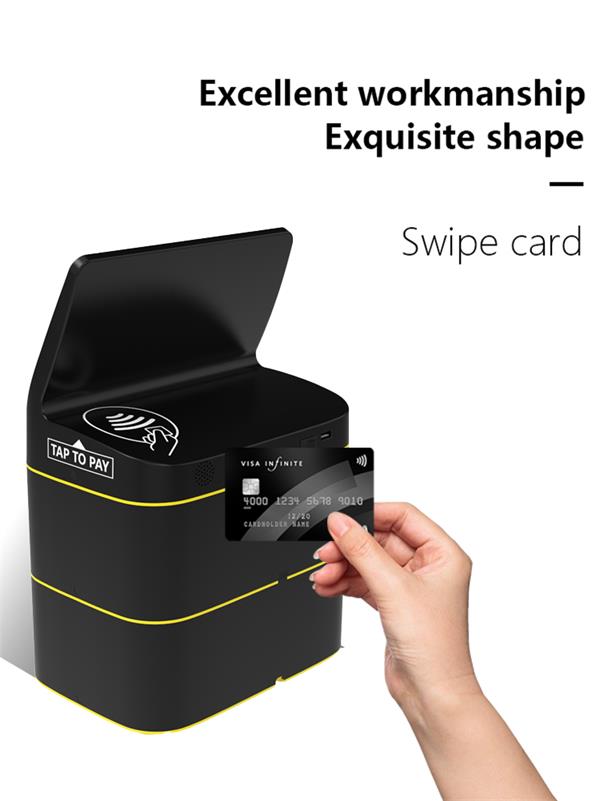Driven by the increasing popularity of smart devices, growing travel demand, and the maturing mobile payment infrastructure, the power bank rental station industry is entering a new phase of global expansion. This article will analyze the global opportunities and strategies for power bank rental stations, starting with the European market and combining regional market characteristics.
一、Huge Potential for Power Bank Rental Stations
Power bank rental stations are essentially a timely response to the "battery anxiety" problem. As smartphone usage continues to rise, so does the reliance on power banks.
According to Canalys data, smartphone shipments in Europe (excluding Russia) will reach 136.1 million units in 2024, a year-on-year increase of 5%. This marks the first growth after four consecutive years of decline, solidifying the user base for power bank rental stations.
.png)
Concurrently, Research and Markets forecasts that the global power bank market will reach US$16.3 billion in 2028, with a compound annual growth rate of 7.27%. The European market, with a 19.42% market share, ranks third globally. The average customer spending per user is generally between €30 and €50, significantly higher than in China. However, despite the considerable market potential, the actual coverage of mobile power rental stations in Europe is severely insufficient. High-energy-consuming locations such as transportation hubs and tourist attractions often face power shortages. Over 5 million Chinese tourists visit Europe annually, yet most still bring their own power banks, a necessity for luggage. This indirectly reflects the inadequate supply of shared charging services.
Thus, the business opportunities in the European mobile power rental station market lie in:
- Large user base and strong spending power: high average customer spending leads to higher profit expectations;
- Low market penetration: no dominant brand currently exists, leaving a gap in the market;
- High tourist population mobility: international tourists have a natural demand for shared charging services.
二、Regional Analysis of Mobile Power Rental Stations
Payment systems, legal regulations, and user behaviors vary significantly across different regions globally, making a single model difficult to replicate. Chinese companies expanding overseas must achieve highly localized adaptation.
1. US Market: Overcoming apathy with experience-driven approaches
US users are relatively unreceptive to the sharing economy, and the early childhood education market still needs time to gain traction. Adopting a "first month free + dynamic pricing" strategy is an effective way to attract first-time users.
In terms of technical adaptation, the US market, heavily reliant on the credit card system, can overcome payment barriers by offering compatibility with Apple Pay/Google Pay (coverage exceeding 60%), while also lowering the barrier to first-time users.
2.European Market: Payment Fragmentation + Challenges and Solutions Under Green Regulations
The EU market's payment system is fragmented, relying primarily on bank cards, NFC, and local protocols. To address this, a "POS + multi-protocol compatibility" strategy is necessary.
Payment Adaptation: Terminals with integrated NFC modules support mainstream cards such as Visa, Mastercard, and JCB, covering approximately 90% of users.
Environmental Regulatory Compliance: CE-certified, the device uses recyclable materials and meets EU green standards, minimizing environmental regulatory risks.
In addition, priority deployment in high-traffic locations (airports, train stations, and scenic spots) can be achieved, with a multilingual interface and a scan-to-rent mechanism to enhance the user experience for overseas users.
3. Southeast Asian Market: Emphasizing both payment decentralization and deep application development
Local e-wallets are the mainstream payment method in Southeast Asian countries. For example, e-wallet usage in Thailand exceeds 80%. Therefore, a "hyperlocalization strategy" is essential.
Payment Integration: Terminals must integrate with local wallets such as PayNow (Singapore), ZaloPay (Vietnam), and TrueMoney (Thailand);
System Optimization: Increase payment success rates to over 95% to ensure a stable user experience;
Application Selection: Prioritize deployment in high-traffic areas such as shopping malls, night markets, temples, and universities.

4. Middle Eastern Market: Focus on religious sites and local financial systems
Middle Eastern countries such as Saudi Arabia are highly dependent on local financial systems and have specific cultural and religious backgrounds, creating a strong demand for cashless payments.
Financial Compatibility: Devices must be pre-installed with the MADA card payment module certified by the Saudi Arabian Central Bank;
Application Layout: Prioritize deployment in religious pilgrimage sites, airports, and commercial areas;
Cultural Respect: Device design and user interface should conform to local customs and aesthetics.
The path for mobile power rental stations to expand overseas is by no means a slavish imitation of successful domestic practices. The consumption habits, payment structure, and regulatory environment of various markets require companies to carry out "deep localization" reconstruction at the strategic, product, and service levels.





.jpg)

.jpg)
.jpg)
.jpg)








